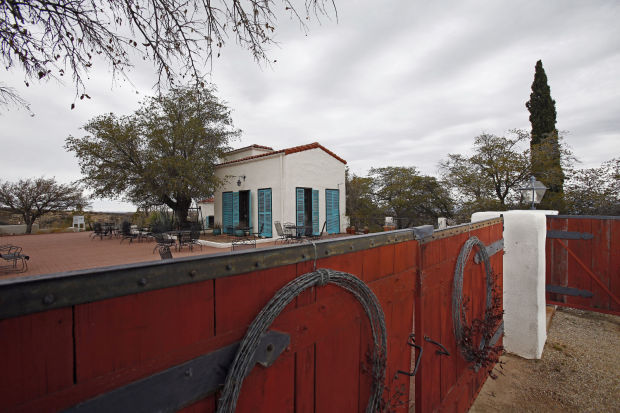
Oracle State Park is a 4,000-acre wildlife refuge in the northern Catalina Mountains. The park offers day-use picnic areas and over 15 miles of trails for use by hikers, mountain bikers, and equestrians. A section of the Arizona Trail crosses through the park. And it is a designated International Darek Sky Park.
Oracle State Park also serves as a Center for Environmental Education and provides programming for all ages. Interactive programs for school groups are offered by reservation. These programs are conducted along trails, so students learn about habitat ands interrelationships between plants, animals, and people.
The Kannally Ranch was donated to The Defenders of Wildlife (DOW), a non-profit organization, in 1976. The will of Lucille Kannally gave the 4000-acre ranch to DOW with the stipulation that the property be perpetually used as a wildlife reserve. The DOW held this property (called the Oracle Wildlife Refuge) for ten years. For most of the time, the Oracle Education Project, under the leadership of Bob Hernbrode, utilized the Kannally Ranch House as its base of operation for a variety of environmental education programs.
Neil Kannally left his home in Illinois in 1902, seeking sunshine at a tuberculosis health resort in the hills of Oracle, 38 miles north of downtown Tucson.
As he grew stronger, Kannally, 23, hatched a plan to bring out his brother, Lee. In 1903, the two purchased the 1880s McCarius homestead on 160 acres of pristine land once inhabited by Hohokam and Apaches, a perfect spot for cattle ranching.
Three other siblings — 30-year-old matriarch Molly, brother Vincent and 7-year-old Lucile — soon followed, and the thriving cattle ranch grew to nearly 50,000 acres.
The old adobe homestead was surely cramped, so the brothers added on to the original house, and later built cottages for Molly and Lucy.
It was not until 1929 that this second-generation Irish Catholic family built an architectural jewel of a ranch house in the heart of what is now Oracle State Park, a dramatic, four-level Mediterranean-Revival style home with Moorish influences, patterned after Italianate villas of the 1920s.
By the 1950s, the family sold off much of the land — including what would become the town of San Manuel — to Magma Copper Co.
The Kannallys, who lived in the home the remainder of their days and never married or had children, are long gone, buried at Holy Hope Cemetery. Gone, too, are family historical records, destroyed at the request of the family upon the death of the last surviving Kannally, Lucy (Lucille), who died in 1976 at age 78.


 The data relating to real estate listings on this website comes in part from the Internet Data Exchange (IDX) program of Multiple Listing Service of Southern Arizona. IDX information is provided exclusively for consumers' personal, non-commercial use and may not be used for any purpose other than to identify prospective properties consumers may be interested in purchasing. Listings provided by brokerages other than SBRanchRealty are identified with the MLSSAZ IDX Logo. All Information Is Deemed Reliable But Is Not Guaranteed Accurate. Listing information Copyright 2020 MLS of Southern Arizona. All Rights Reserved.
The data relating to real estate listings on this website comes in part from the Internet Data Exchange (IDX) program of Multiple Listing Service of Southern Arizona. IDX information is provided exclusively for consumers' personal, non-commercial use and may not be used for any purpose other than to identify prospective properties consumers may be interested in purchasing. Listings provided by brokerages other than SBRanchRealty are identified with the MLSSAZ IDX Logo. All Information Is Deemed Reliable But Is Not Guaranteed Accurate. Listing information Copyright 2020 MLS of Southern Arizona. All Rights Reserved.